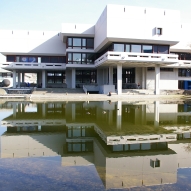Zusammenfassung
We generalize geometric algorithms to overcomplete cases with more sources than sensors. With geometric ICA we get an efficient method for the matrix-recovery step in the framework of a two-step approach to the source separation problem. The second step - source-recovery - uses a maximum-likelihood approach. There we prove that the shortest-path algorithm as proposed by Bofill and Zibulevsky indeed solves the maximum-likelihood conditions.
Nur für Besitzer und Autoren: Kontrollseite des Eintrags



 Altmetric
Altmetric Altmetric
Altmetric